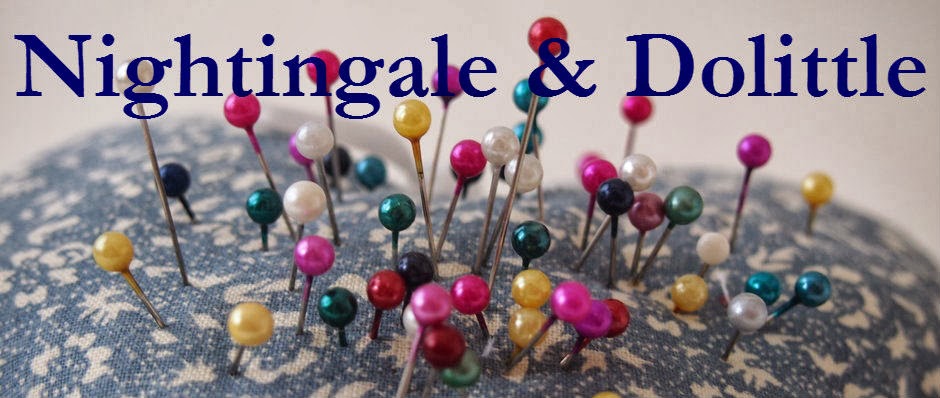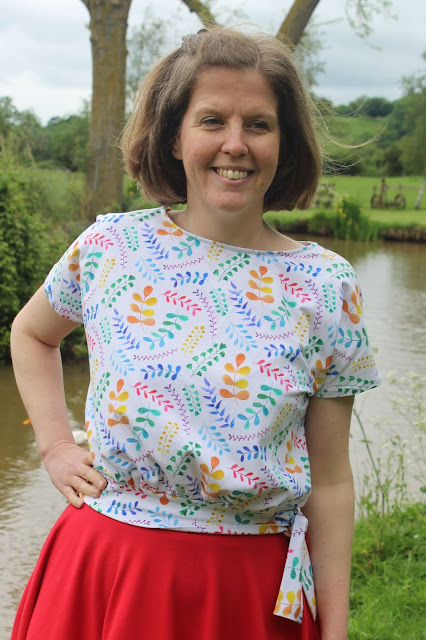Rory is a cropped t-shirt with grown-on sleeves, a relaxed fit gathered into a tie waistband at the natural waist and a boat neck. It reminded me of a top that I used to have many years ago, and seemed to be very wearable whilst still being a little different from a standard t-shirt so it really appealed to me. Plus I love anything with ties/bows, so that was an added bonus as far as I was concerned!
The instructions are very thorough and clear, and pattern is fairly simple to sew. If you've already sewn a knit top or two then it shouldn't pose any problems. The only difference from the construction of a standard t-shirt is the gathering of the main bodice into the waistband, and that was as easy as pie for me.
I liked the fact that the neckband is attached and then folded to the inside before being topstitched down so it's more like a binding. It seems to suit this top better than having a neckband visible on the outside, but gives a better finish than just turning the bodice itself under.
In terms of sizing - my measurements put me in a 10 at the bust and 12 at the waist and that seemed like it should work nicely based on the finished measurements. I was unsure of whether to lengthen the top - with woven patterns I'd make a toile, but inexpensive jersey isn't so easy to come by! I compared the measurements to some of my other tops and decided that it was on the borderline of being OK, but to be on the safe side I cut and sewed the bodice pieces before cutting the waistband so that I could lengthen that if necessary. When I tied on the assembled bodice, it seemed like it was just about right but I added an inch to the width of the waistband (which means that the finished top is half an inch longer as the waistband is folded in half) just to make sure that the top would be long enough.
I'm fairly happy with the fit - if I made another I might consider making a straight size 10 in the bodice and then just gathering it into a size 12 waistband so that there's slightly less blousing in the bodice section, but this one's fine the way it is.
The pretty jersey that I used is from LouBodu Fabrics - I got some of the last of it in the sale and it's now sold out (sorry!), but they have plenty of other fun prints if you're in the market for some interesting jersey. The fabric is great quality, and feels like it should wear well.
All in all, I'm really happy with my Rory top - it was fun and quick to make, is comfy to wear but more interesting than a standard t-shirt, and all the colours in the print mean that I should be able to wear it with lots of things. You can't ask for much more, can you?























